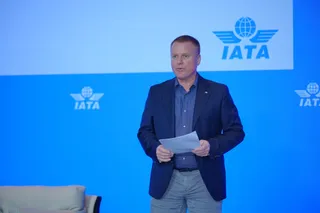Sea Drones: Taking the Operator Out of the Loop
Contact Our Team
For more information about how Halldale can add value to your marketing and promotional campaigns or to discuss event exhibitor and sponsorship opportunities, contact our team to find out more
The Americas -
holly.foster@halldale.com
Rest of World -
jeremy@halldale.com

In the maritime environment, unmanned vehicles are both training devices and sensor platforms. Beth Stevenson explores examples of surface and subsurface naval drones.
Unlike unmanned air systems (UAS), in which the man in the loop is an essential component of mission execution, unmanned vehicles in the maritime environment tend toward autonomy. And because of this difference, the training to support these vehicles is technical and largely focused on managing the vehicle in pre- and post-mission aspects. The conduct and content of the mission is platform-agnostic and defined by doctrine.
Targets for antisubmarine warfare are a good example. “ASW can be carried out with multiple assets, not just vessels but also helicopters and submarines,” Carl-Marcus Remén, sales director for underwater systems at Saab Dynamics, told MS&T. “An ASW task force can have one surface unit like a corvette or a frigate, and you can use helicopters for identification and engagement with torpedoes. The operators training against this can be anything from up in the air to under the water with submarines.”
Saab took the modular design of its torpedo-derived AUV62 autonomous underwater vehicle and adapted it into a training system a decade ago, a capability that Remén says is able to sit in the water for some 24 hours and be used for training by naval forces as and when required when it is deployed at sea.
“When you train you need an enemy or a submarine, and that is quite hard to get because the main purpose of the submarine is not to be a target, but to gather intelligence,” he says. “So, those operators need to train against a target or training system that is almost the same as a submarine. That is our main objective with the AUV62.”
The company has had a long relationship with the Swedish navy regarding development and operation of the system, which started out using it as a mine reconnaissance vehicle before evolving to also use it as a training system.
The AUV62 essentially mimics the acoustic signature of a submarine, and the various platforms that carry out ASW can use their respective sensors to detect, track and monitor the threat in the training environment.
“It is not only an active response, it can also work against passive sensors,” Remén explained. “They can work in the whole engagement loop from detecting, identifying, classifying, and then engagement with torpedoes, and that is unique.”
Operators can plan the training missions in advance, programming different plans into the system. Once launched, the system then acts autonomously, but can be steered by an operator, who is able to alter the mission in real time.
The ability of the AUV62-AT (for Acoustic Target) to work around the clock enables units to train to different scenarios. “That long endurance allows you to work with and against multiple task force elements,” Remén added.
“Because it is flexible, as an ASW commander, if you have some spare time, you can launch this vehicle and train crew almost at an instance instead of having to have lots of planning ahead. It is very flexible for the operators.”
A software-defined element allows the user to programme the mission to match its own threats and the signatures of target submarines, providing a more realistic training scenario. “So, it is very adaptable system for each user. Saab isn’t providing any standard library for submarines, so the software allows the user to use its own intelligence to programme it.”
While the Swedish navy is a notable operator of the system, Saab could not disclose other users, but noted that “tier one navies in the Asia-Pacific” are included.
Remén said the evolution of new battery technologies is one key area the company is looking to incorporate into its systems, an advancement that is constantly evolving and is being benefitted by the automotive industry.
Nasty Fish
In the USV – unmanned surface vehicle – field, Challenger Aerospace’s Marine Systems division promotes itself as a “one stop shop,” offering a comprehensive training regime that takes an operator from novice to fully trained. The unmanned vehicles are modified racing boats that have been stripped to allow for integration of an autonomous module.
LeRoy Aday, president and CEO of Challenger, told MS&T, “Our surface vehicle products, the Barracuda and the Piranha, are both jet boats that have no propeller at the bottom; they suck in water and eject it out the back, and they function in about five inches of water, so they will go up the stream. At 14 feet, the twin-engine Piranha is three feet longer than the Barracuda. The platforms are designed to carry integrated sensors, data link systems and armament.
“We don’t just train a person on a drone, we train them on the system and the integration, so it can take up to four weeks, or as little as two.
Aday added, “We integrate other people’s software or pieces into our drones, so we do the integration, then we do the training, for the maintenance as well as the operation,” he said. “When they leave they are front-to-back trained on everything.”
Persistent Sea Sensors
Water-borne drones are also used to assess, monitor, and protect the ocean. Liquid Robotics, a Boeing company, is at the forefront of autonomous high-endurance maritime surveillance with the Wave Glider family of systems. Wave Gliders are a unique low-cost persistent 24/7 platform for surface and subsurface sensors that can be used in ASW, surface vessel detection, over the horizon ISR, and as a communications gateway to connect seabed to space.
“Developer training, specifically looks at how an integrator would bring communications and sensors and their special packages onto the platform,” Don Jagoe, head of naval programmes at the company, told MS&T. “It is typically about a week, held in Sunnydale, California by our engineers, in both software and hardware.”
The company also offers a launch-and-recovery programme that it
conducts from Hawaii, for which it has a purpose-built boat to train operators over a 3-4 day period. “They will have the experience of getting the vehicles in and out of the water, as well as doing the pre-mission checks on the vehicle,” Jagoe explained.
“If there are specific interests that a partner has for sensors, we have relationships and can call partners in to offer specific expertise if required. We have integrated well over 50 sensors at this point onto the vehicle, so there is a pool of expertise.” They could also change out the communications system from mission to mission, so that has to be included in the training.
He noted that once this training has been carried out, operations become more intuitive. “However, I would stress that this requires a level of background and expertise,” Jagoe cautioned.
“Rather than having a scheme where they come back for training, what happens in practice is that we have a dialogue with our systems engineers and [those operating], so as they are preparing for a test, we make sure that the vehicles are providing the data that they need. It’s really mission led.”
“Wave Glider has been built to be almost plug and play. It is very modular, and it has a wide range of applicability,” Jagoe explained. “In a very rapid way we can alter the payloads, the communications, the sensors, the power.”
Originally published in Issue 6, 2018 of MS&T Magazine.

.png/r%5Bwidth%5D=320/7f2021f0-9a0d-11f0-b8f7-272ce5993c28-nano-banana-2025-09-24T11-07-03%20(1).webp)
